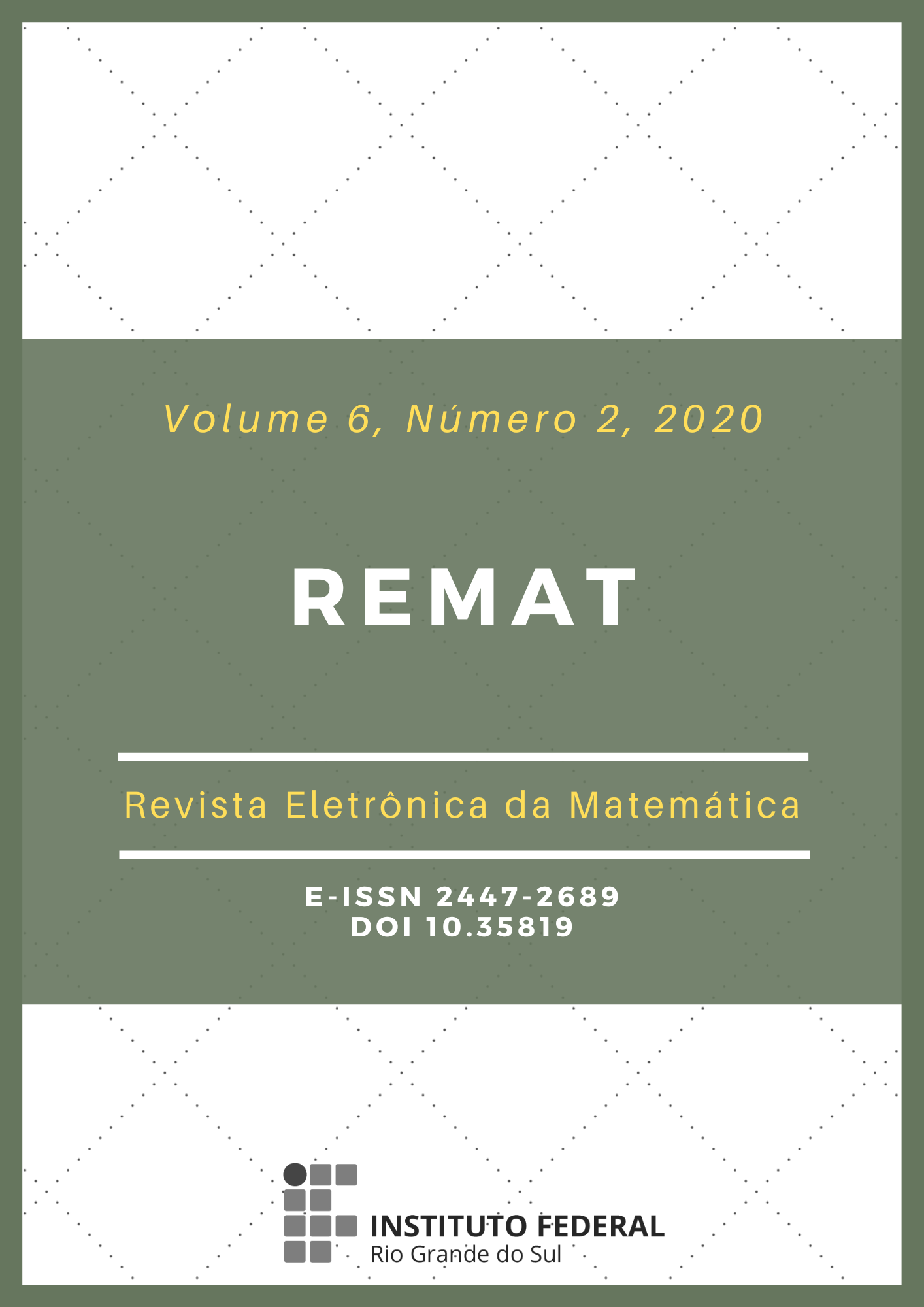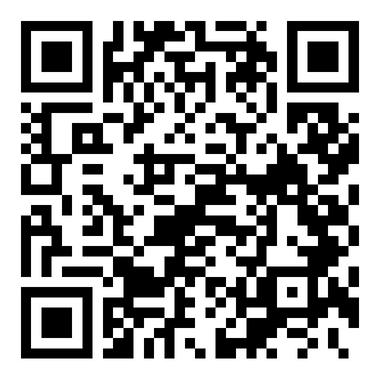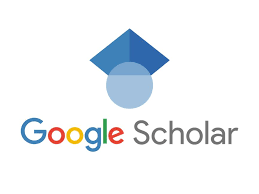Construction of a historical narrative for the classroom: Eratosthenes, the calculation of the circumference of the Earth and the teaching of similarity of triangles
DOI:
https://doi.org/10.35819/remat2020v6i2id4282Keywords:
Eratosthenes, Historical Narrative, History of Mathematics, Similarity of TrianglesAbstract
This work aims to present an approach to teaching the content of similarity of triangles, based on elements of the History of Mathematics, through historical narratives. The qualitative study uses bibliographic research as a strategy for the construction of a historical narrative that aims to assist the teaching of similarity of triangles from a story focused on the calculation of the circumference of the Earth. The historical facts taken as the main elements in the process of narrative construction and chosen in a way that were related to the contents intended to be taught, were constituted from fragments of history presented in the works of the authors Lasky (2001), Vinagre e Lunazzi (2002) and Asger (1984). Through this proposal, the dynamic of teaching methodologies is emphasized, through the use of interdisciplinary elements that promote qualitative changes in the teaching and learning process, and also enable new ways of addressing content in the classroom and a more active participation of the student in the learning process.
Downloads
References
ARAMAN, E. M. O.; BATISTA, I. L. O Processo de Construção de Abordagens Históricas na Formação Interdisciplinar do Professor de Matemática. Bolema, v. 31, n. 57, p. 380-407, 2017. DOI: http://dx.doi.org/10.1590/1980-4415v31n57a19.
ASGER, A. Episódios da História Antiga da Matemática. Trad.: PITOMBEIRA, J. B. Rio de Janeiro: SBM, 1984.
BIANCHI, M. I. Z. Uma reflexão sobre a presença da História da Matemática nos livros didáticos. Orientadora: Rosa Lúcia Sverzut Baroni. 2006. 103 p. Dissertação (Mestrado em Educação Matemática) - Programa de Pós-Graduação em Educação Matemática, Universidade Estadual Paulista, Rio Claro/SP, 2006. Disponível em: https://repositorio.unesp.br/bitstream/handle/11449/91102/bianchi_miz_me_rcla.pdf?sequen. Acesso em: 9 dez. 2020.
BRASIL. Ministério da Educação. Base Nacional Comum Curricular: Educação é a Base. Brasília: MEC, 2017. Disponível em: http://basenacionalcomum.mec.gov.br/images/BNCC_EI_EF_110518_versaofinal_site.pdf. Acesso em: jun. 2020.
BRASIL. Ministério da Educação, Secretaria de Educação Básica. Orientações curriculares para o Ensino Médio. Ciências da natureza, matemática e suas tecnologias. Brasília: MEC/SEB, 2006.
BRASIL. Ministério da Educação. Secretaria de Educação Fundamental. Parâmetros Curriculares Nacionais: terceiro e quarto ciclos do Ensino Fundamental. Introdução aos parâmetros curriculares nacionais. Brasília: MEC/SEF, 1997.
CASTRO, L. C.; BRAGANÇA, D. D. Matemática e Arte: um encontro ao longo da história. In: CONFRESSO DE LEITURA NO BRASIL, 16, Campinas, jul. 2007. Anais [...]. Campinas: Associação de Leitura do Brasil, 2007. Disponível em: http://alb.org.br/arquivo-morto/edicoes_anteriores/anais16/sem15dpf/sm15ss09_06.pdf. Acesso em: 18 dez. 2020.
CHEVALLARD, Y. La transposición didáctica: Del saber sabio al saber enseñado. Buenos Aires: Aique Grupo Editor, 1995.
COSTA, E. A. S. Analisando algumas potencialidades pedagógicas da História da Matemática no ensino e aprendizagem da disciplina desenho geométrico por meio da teoria fundamentada. Orientadores: Marger da Conceição Ventura Viana, Milton Rosa. 2013, 242 p. Dissertação (Mestrado Profissional em Educação Matemática) - Programa de Pós-Graduação em Educação Matemática, Universidade Federal de Ouro Preto, Ouro Preto, 2013. Disponível em: https://www.repositorio.ufop.br/handle/123456789/3320. Acesso em: 18 dez. 2020.
D’AMBROSIO, U. A História da Matemática: questões historiográficas e políticas e reflexos na Educação Matemática. In: BICUDO, M. A. V. (Org.). Pesquisa em Educação Matemática: concepções e perspectivas. São Paulo: Editora UNESP, 1999. p. 97-115.
DIAS, G. F.; CAVALCANTE, N. S.; SILVA, J. J.; ASSIS, F. G. A História da Matemática como recurso pedagógico: resultados de um projeto de ensino. In: ENCONTRO NACIONAL DE EDUCAÇÃO MATEMÁTICA, 12, São Paulo, jul. 2016. Anais [...]. Sociedade Brasileira de Educação Matemática, 2016. Disponível em: www.sbem.com.br/enem2016/anais/pdf/5210_3822_ID.pdf. Acesso em: jun. 2020.
FERNANDES, H. S. Narrativas Históricas: Discutindo a natureza da Ciência através de uma abordagem histórico-filosófica. Orientadora: Andreia Guerra de Moraes. 2012. 133 f. Dissertação (Mestrado em Ciência, Tecnologia e Informação) - Programa de Pós-Graduação em Ciência, Tecnologia e Educação, Centro Federal de Educação Tecnológica Celso Suckow da Fonseca, Rio de Janeiro, 2012. Disponível em: http://dippg.cefet-rj.br/ppcte/attachments/article/81/2012%20-%20NARRATIVAS%20HIST%C3%93RICAS%20DISCUTINDO%20A%20NAT~.pdf. Acesso em: 18 dez. 2020.
FORATO, T. C. M.; PIETROCOLA, M.; MARTINS, R. A. Historiografia e Natureza da Ciência na sala de aula. Caderno Brasileiro de Ensino de Física, v. 28, n. 1, abr. 2011, p. 27-59. DOI: https://doi.org/10.5007/2175-7941.2011v28n1p27.
FOSSA, J. A. Ensaios sobre a Educação Matemática. Belém: EDUEPA, 2001.
GEVAERD, R. T. F. Narrativa histórica: uma das formas pelas quais alunos e professores dão sentido ao passado histórico. CONGRESSO NACIONAL DE EDUCAÇÃO - EDUCERE, 10, Curitiba, nov. 2011. Anais [...]. Curitiba: PUCPR, 2011. Disponível em: www.educere.bruc.com.br/CD2011/pdf/4732_2529.pdf. Acesso em: jun. 2020.
GIL-PÉREZ, D.; MONTORO, I. F.; ALÍS, J. C., CACHAPUZ, A.; PRAIA, J. Para uma imagem não deformada do trabalho científico. Revista Ciência e Educação, Bauru, v. 7, n. 2, p. 125-153, 2001. DOI: https://doi.org/10.1590/S1516-73132001000200001.
GUERRA, A.; BRAGA, M.; REIS, J. C. History, Philosophy, and Science in a social perspective: a pedagogical project. Science & Education, v. 22, n. 6, p. 1485-1503, 2013. DOI: https://doi.org/10.1007/s11191-012-9501-5.
HADZIGEORGIOU, Y.; KLASSEN, S.; KLASSEN, C. F. Encouraging a “Romantic Understanding” of Science: The Effect of the Nikola Tesla Story. Science & Education, v. 21, p. 1111–1138, 2012. DOI: https://doi.org/10.1007/s11191-011-9417-5.
KLASSEN, S. The construction and analysis of a science story: a proposed Methodology. Science & Education, v. 18, n. 3-4, p. 401-423, 2009. DOI: https://doi.org/10.1007/s11191-008-9141-y.
KLASSEN, S. The Photoelectric Effect: Reconstructing the Story for the Physics Classroom. Science & Education, v. 20, n. 7-8, p. 719-731, 2011. DOI: https://doi.org/10.1007/s11191-009-9214-6.
KUBLI, F. Historical Aspects in Physics Teaching: Using Galileo's Work in a New Swiss Project. Science & Education, v. 8, p. 137-150, 1999. DOI: https://doi.org/10.1023/A:1008613706212.
KUBLI, F. Can the theory of narratives help science teachers be better storytellers? Science & Education, v. 10, p. 595-599, 2001. DOI: https://doi.org/10.1023/A:1017518316293.
LASKY, K. O bibliotecário que mediu a Terra. Rio de Janeiro: Salamandra, 2001.
MARINHO, E. R. M. A História da Matemática como motivação para a aprendizagem das relações trigonométricas no triângulo retângulo. Orientador: Francisco Cesar Polcino Milies. 2018. 118 f. Dissertação (Mestrado Profissional em Ensino de Matemática) - Instituto de Matemática e Estatística, Universidade de São Paulo, 2018. DOI: https://doi.org/10.11606/D.45.2019.tde-25042019-204602.
MENDES, I. A. Matemática e investigação na sala de aula: tecendo redes cognitivas na aprendizagem. Natal: Flecha do Tempo, 2009.
MICHALOVICZ, S.; PACHECO, E. R. Matemáticos na história: uma proposta pedagógica para o ensino de matemática. 2007. Disponível em: http://www.diaadiaeducacao.pr.gov.br/portals/pde/arquivos/699-4.pdf. Acesso em: jun. 2020.
NORRIS, S. P.; GUILBERT, S. M.; SMITH, M. L.; HAKIMELAHI, S.; PHILLIPS, L. M. A theoretical framework for narrative explanation in science. Science & Education, v. 89, p. 535-563, 2005. DOI: https://doi.org/10.1002/sce.20063.
OSBORNE. J.; RATCLIFFE, M.; COLLINS, S.; MILLAR, R. What “ideas-about-science” should be taught in school science? A Delphi study of the expert community. Journal of research on Science Teaching, v. 40, p. 692-720, 2003. DOI: https://doi.org/10.1002/tea.10105.
PEREIRA, A. C. C.; SILVA, C. I.; NOGUEIRA, S. R.; ALVES, V. F. Sobre o uso de fontes na disciplina de História da Matemática: Problema 56 do Papiro de Rhind. REVEMAT, Florianópolis, v. 2, n. 10, p. 243-257, 2015. DOI: https://doi.org/10.5007/1981-1322.2015v10n2p243.
RIGO, M. F. Argumentação e pensamento genérico no Ensino Fundamental. Orientadora: Cydara Cavedon Ripoll. 2016. 47 f. Trabalho de Conclusão de Curso (Graduação em Matemática) - Universidade Federal do Rio Grande do Sul, Porto Alegre/RS, 2016. Disponível: https://www.lume.ufrgs.br/bitstream/handle/10183/148325/001002511.pdf?sequence=1. Acesso em: 9 dez. 2020.
RÜSEN, J. Razão histórica. Teoria da história: os fundamentos da ciência histórica. Trad.: MARTINS, Estevão de Rezende. Brasília: UNB, 2001.
SANTOS, C. A. dos. A História da Matemática como ferramenta no processo de ensino-aprendizagem da Matemática. Orientador: Ubiratan D’Ambrosio. 2007. 94f. Dissertação (Mestrado Profissional em Ensino de Matemática) - Pontifícia Universidade Católica de São Paulo, São Paulo, 2007. Disponível em: https://tede2.pucsp.br/handle/handle/11493. Acesso em: 9 dez. 2020.
SCHIFFER, H.; GUERRA, A. Electricity and Vital Force: Discussing the Nature of Science Through a Historical Narrative. Science & Education, v. 24, p. 409-434, 2014. DOI: https://doi.org/10.1007/s11191-014-9718-6.
TALIZINA, N. La teoría de la actividad aplicada a la enseñanza. Puebla: Benemerita Universidad Autónoma de Puebla, 2009.
TRIVIZOLI, L. M.; MARIOTTO, R. O Problema de Apolônio: panorama histórico e sua resolução utilizando um software geométrico. SEMINÁRIO NACIONAL DE HISTÓRIA DA MATEMÁTICA, 9, Aracaju, abr. 2011. Anais [...]. Sociedade Brasileira de História da Matemática, 2011.
VINAGRE, A. L. M.; LUNAZZI, J. J. Eratóstenes e a Medida do Diâmetro da Terra. 2002. Disponível em: https://www.ifi.unicamp.br/~lunazzi/F530_F590_F690_F809_F895/F809/F809_sem2_2002/940298_AndreVinagre_Eratostenes.pdf. Acesso em: jun. 2020.
WINSTON, J. Teaching Chemistry as a Story: Using Narrative Structure as a Framework for Science Education. Electronic Journal of Science Education, v. 23, n. 3, 2017. Disponível em: https://ejrsme.icrsme.com/article/view/19372. Acesso em: 9 dez. 2020.
Downloads
Published
Issue
Section
License
Copyright (c) 2020 REMAT: Revista Eletrônica da Matemática

This work is licensed under a Creative Commons Attribution 4.0 International License.
REMAT retains the copyright of published articles, having the right to first publication of the work, mention of first publication in the journal in other published media and distribution of parts or of the work as a whole in order to promote the magazine.
This is an open access journal, which means that all content is available free of charge, at no cost to the user or his institution. Users are permitted to read, download, copy, distribute, print, search or link the full texts of the articles, or use them for any other legal purpose, without requesting prior permission from the magazine or the author. This statement is in accordance with the BOAI definition of open access.













 https://orcid.org/0000-0002-0893-7426
https://orcid.org/0000-0002-0893-7426


















